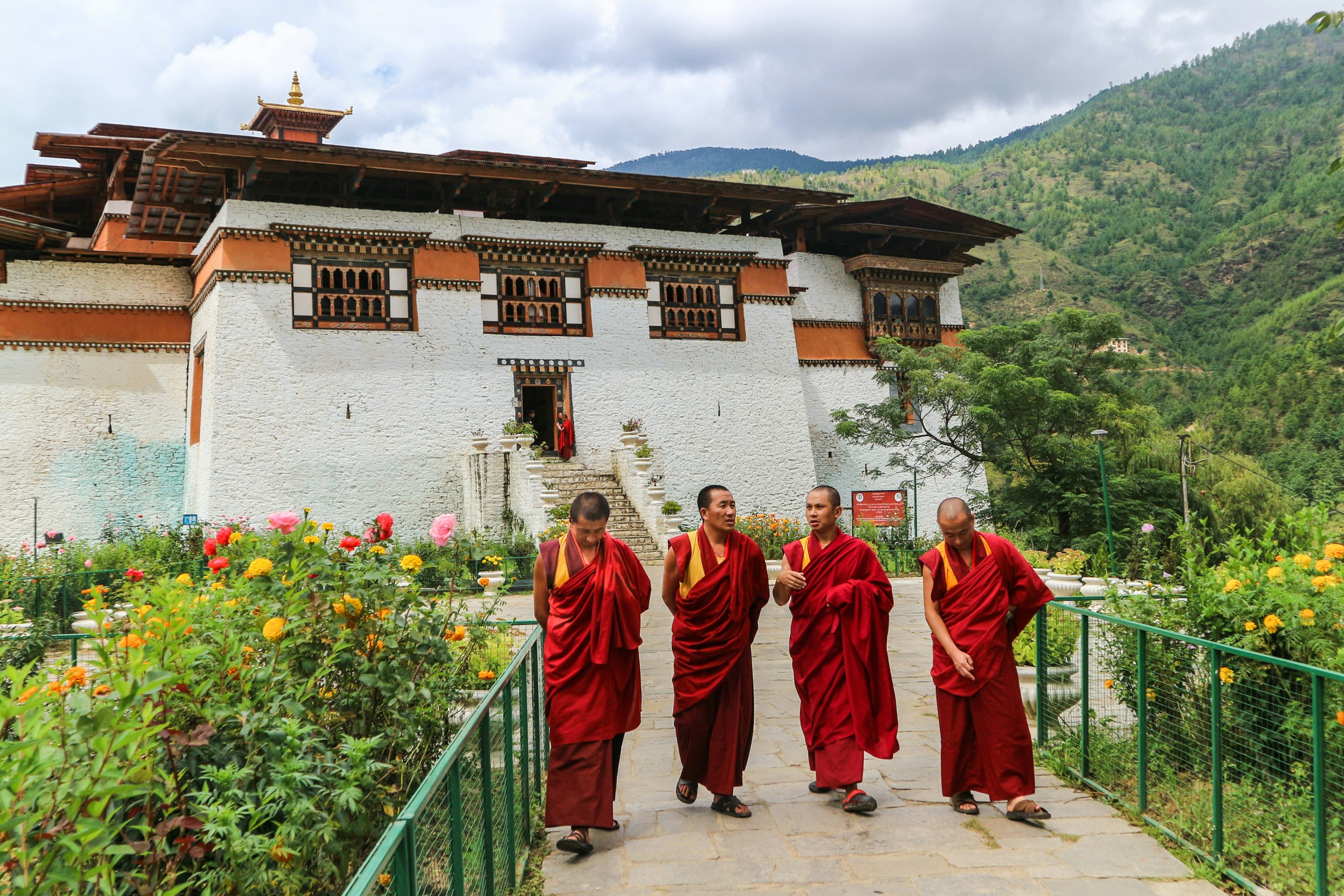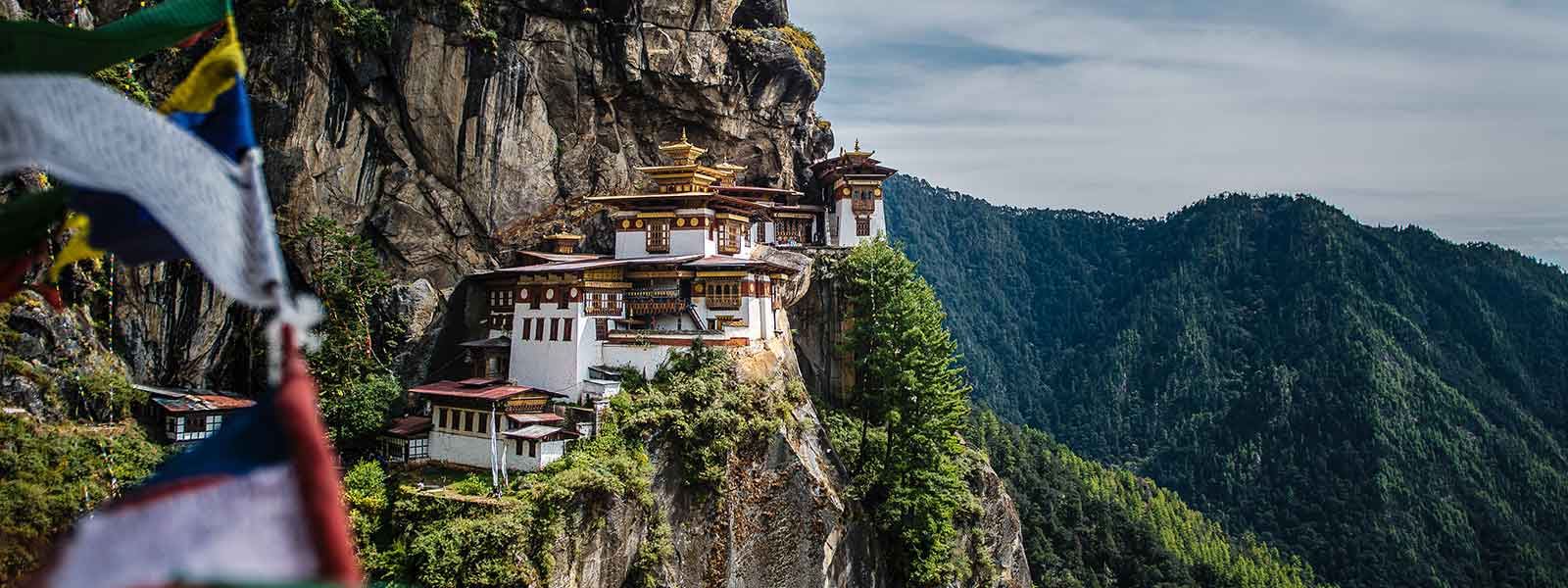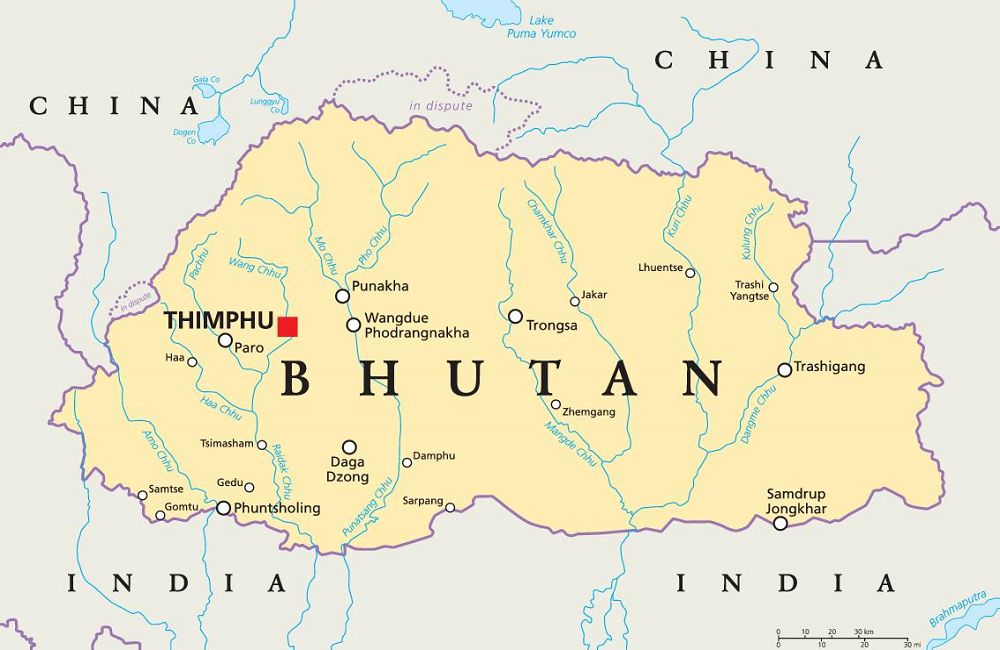Discover Bhutan
Bhutan is a beautiful and mysterious country tucked away in the Himalayas. It is home to some of the world’s most stunning landscapes and a unique culture that is deeply rooted in Buddhism. The country is renowned for its pristine environment and its commitment to Gross National Happiness. Bhutan is a great destination for travelers looking to explore and experience a diverse, natural, and spiritual environment. From trekking and hiking in the breathtaking Himalayan mountains to visiting ancient monasteries, Bhutan offers a plethora of activities and experiences for every type of traveler.
Planning a trip to Bhutan? Read our Bhutan travel guide to find out when to visit, what to do, and much more to make your vacation unforgettable.
What is the best time to visit Bhutan?
The best time to visit Bhutan is from October to December when the country is at its most vibrant. During this period, the skies are clear, the temperature is mild, and the hillsides are full of color with blooming rhododendrons and magnolias. Other peak season months to visit include March, April, and May, when the mountain passes open and the temperatures are more temperate.
What is the best way to get to Bhutan?
Getting to Bhutan can be somewhat tricky, and most travelers will fly roundtrip to Bangkok, Thailand, and then take short flights to/from Paro, Bhutan. Flights from the United States to Bhutan take about 15-17 hours, depending on your departing airport.
How to get around Bhutan?
The best way to get around Bhutan is by riding a taxi. Taxis are available in the larger cities and can be used to travel between cities. Alternatively, public transportation is also available with buses and shared taxis running between most major destinations. For those looking for a more unique experience, the iconic Bhutanese horse and yak carts are a great way to explore the countryside.
Do I need a visa to visit Bhutan?
American citizens need a visa to enter Bhutan. MT Sobek arranges a group visa for trips to Bhutan. In order to obtain our group visa, the following must be completed at least 60 days prior to departure:
- Email your Adventure Coordinator a clear, full-color scan of the photo page of your passport
- Email your Adventure Coordinator a high-resolution, color passport-sized photo
- Complete the Bhutan visa form and email it to us
How many days should I spend in Bhutan?
There is so much to see and do in Bhutan, and since it is a rather long distance to travel, you’ll enjoy it most if you plan on at least 10 to 14 days.
What are the top 5 places to visit in Bhutan?
1. Taktsang Monastery

Taktsang Monastery (also known as Tiger’s Nest) is a remarkable Himalayan Buddhist monastery situated in the Paro Valley in Bhutan. The temple complex is perched on a cliff at an altitude of over 10,000 feet and is considered one of Bhutan’s most iconic landmarks. Built-in 1692, the monastery is a popular pilgrimage destination for Buddhists and is known for its spectacular location and breathtaking views of the surrounding valley. It is also home to many sacred and revered Buddhist relics.
2. Punakha Dzong

Located at the confluence of two rivers, the Mo Chhu and Po Chhu, the Punakha Dzong (also known as Pungthang Dechen Phodrang) is one of the most beautiful dzongs in Bhutan. Built-in 1637, it was the second and oldest surviving dzong in Bhutan and served as the capital and seat of government until 1955.
3. Thimphu

The vibrant capital of Bhutan, Thimphu is one of the most popular places to visit in the country. Home to several cultural sights, religious places, and scenic natural attractions, the city offers a unique blend of the traditional and modern.
4. Haa Valley

Located in the west of Bhutan and bordering Sikkim, the Haa Valley is one of the best lesser-known valleys. Haa was closed to visitors until 2001 and is well know for its stunning pine forests and tranquil atmosphere. Stay at a lodge with a beautiful setting in the Haa Valley.
5. Chomolhari

Chomolhari (or Jomolhari) is a Himalayan mountain located between the border of Bhutan, China and Tibet. At 24,935 feet it rises majestically above the landscape and is a well-known destination for mountain treks. Weather permitting, glimpse your first view of Chomolhari on the route from Paro River Valley to Soi Thangthangkha (11,840′).

What are the best adventure tours in Bhutan?
1. Bhutan Trek & Cultural Discovery Tour

The enchanting Kingdom of Bhutan is an earthly nirvana filled with natural beauty and Buddhist tradition. This MT Sobek-exclusive itinerary highlights the best of Bhutan through three days of ridgeline trekking and camping, with the remaining time allocated for easy touring and scenic day hikes. Visit Bhutan’s most famous monasteries, learn about Bhutanese folk art, discover the Paro Valley, explore the remote and magical Haa Valley, and lose yourself amid some of the world’s most exciting peaks. This short visit will stay with you for a lifetime!
2. Bhutan Chomolhari Trek

This memorable trek is a must-do for every serious trekker who wants to experience the Himalayas from the path less traveled! Immerse yourself in the magical kingdom of Bhutan’s Buddhist culture by visiting its famous dzongs (citadels) and monasteries. Meet traditional Bhutanese monks and yak herders while trekking through pristine forests, river valleys, and farmland, and over snowy ridgelines and mountain passes – all with our experienced guides and trekking team helping every step of the way! Join MT Sobek, trekking pioneers in this enchanted country, on this rare adventure around sacred Chomolhari.
3. Bhutan, Nepal, Tibet Himalayan Passages Hiking Tour

Experiencing all three Himalayan kingdoms in one journey is a rare feat, but MT Sobek’s 50 years of expertise in the Himalaya puts this odyssey within easy reach. Blending cultural discovery with moderate high altitude hiking, this exclusive itinerary goes deep into the heart of Bhutan, Nepal and Tibet – beautifully showcasing unspoiled Buddhist cultures. Along the way, discover Bhutan’s rich traditions; explore Kathmandu’s elaborate temples, stupas, and bazaars; and marvel at Tibet’s remote monasteries and the holy city of Lhasa. This incredible line-up of each kingdom’s must-see destinations can’t be missed!
Where are the best places to stay in Bhutan?
Bhutan is a beautiful, mountainous country in the heart of the Himalayas. It is known for its stunning landscapes and ancient Buddhist culture. The country offers a variety of accommodation options to suit any budget and taste.
For those looking for a luxurious stay, there are a range of five-star hotels in major cities like Thimphu and Paro. These hotels offer elegant rooms with all the amenities of a modern hotel, including complimentary Wi-Fi, swimming pools, and spa services.
For a traditional Bhutanese experience, stay in one of the country’s many traditional guesthouses, or gokhangs. These guesthouses often have basic amenities, but they are the perfect way to get a taste of local culture.
For a unique stay, try a homestay. Staying in a local family’s home can be a great way to learn about Bhutanese culture and make meaningful connections.
1. The Zhiwa Ling – Paro

The Zhiwa Ling is a luxurious retreat that combines the sensibilities of a fine Bhutanese guesthouse with the best of modern comforts. The exquisite architecture and manicured gardens create an authentic, inviting atmosphere. Guest rooms, spread out on 10 acres of pristine land, feature modern amenities and comfortable furnishings. Enjoy a traditional outdoor hot-stone bath, a teahouse, a meditation house, and two restaurants.
2. Druk Hotel – Thimphu

Experience the legendary hospitality of the Bhutanese people at this fine Himalayan hotel. Located in the heart of the capital city, the Druk Hotel is close to shopping, culture, and the bubbling Thimphu River. Pleasant rooms are outfitted with comfortable beds, tiled bathrooms, soaking tubs, and modern amenities, while the spa rounds out the offering.
3. Lechuna Heritage Lodge – Haa Valley

A beautiful farmhouse converted into a lovely accommodation in the heart of one of Bhutan’s least visited regions, the Lechuna Heritage Lodge is truly a unique getaway. Its seven rooms are simply but comfortably appointed, and the on-site restaurant features Himalayan cuisine from Tibet, Nepal, and, naturally, Bhutan.
Things to know about Bhutan
Bhutan is an incredible country located in the eastern Himalayas. It is known for its unique culture, breathtaking landscapes, and its commitment to Gross National Happiness. Bhutan is the only country in the world to measure its progress in terms of happiness, making it a very special place.
Bhutan is home to stunning mountain peaks and lush valleys, making it a great destination for outdoor enthusiasts. It is also known for its ancient Buddhist monasteries, many of which are still active today. The country is rich in traditions and culture.
What is the language in Bhutan?
Bhutan is a small country in the Himalayas, bordered by India and China. It is home to a unique language called Dzongkha, which is the national language of Bhutan. Dzongkha is a Tibeto-Burman language that is related to both Tibetan and Nepali. It is spoken by around 800,000 people in Bhutan, and is the main language spoken in the country’s administrative and legal system.
What to eat in Bhutan?
The cuisine of Bhutan is unique and quite distinct from that of its neighboring countries. Common staples of Bhutanese cuisine include rice, buckwheat, and increasingly maize. Local dishes are commonly spicy and feature a variety of chilies and other spices, often making use of locally grown ingredients. Dairy products such as cheese, butter, and yogurt are also an important part of Bhutanese cuisine. Meat dishes are also popular, with beef, pork, yak, and chicken all being served. Common dishes include dumplings, momos, phaksha paa (fried pork), and the national dish of ema datshi, which is a spicy chili and cheese dish.
What is the currency in Bhutan?
The local currency is the Bhutanese Ngultrum (BTN). Check out www.xe.com for current exchange rates. Money can be exchanged at the airport upon arrival (be sure to keep your receipts in case you need to exchange back on departure) or is widely available to withdraw from ATMs in Paro and Thimphu. Major credit cards such as Visa and MasterCard are accepted at many shops in Paro and Thimphu.
What is the electricity in Bhutan?
Bhutan is on the 230V system and uses Type D, F and G outlets. Check the voltage on your personal electronics chargers to determine if you need a voltage converter. A good resource to see images of plug types is www.power-plugs-sockets.com.
What is the time zone in Bhutan?
Bhutan is located in the Bhutan Time Zone (BTT), which is 6 hours ahead of Greenwich Mean Time (GMT+6). The time zone is also known as Bhutan Standard Time. The time zone includes the entire country of Bhutan, as well as parts of India, Bangladesh, and China.
BTT is an interesting time zone, as it is not based on the traditional 24-hour clock. Instead, the country adheres to the traditional Buddhist system of timekeeping, which is based on the number of hours since dawn.
What to wear in Bhutan?
Dressing in layers is the key to staying comfortable throughout the day in Bhutan. Your innermost layer should be long underwear, if necessary. The middle layer should be your shirt and hiking pants. The outermost layer should keep you warm and dry- such as a good fleece/down jacket and a waterproof, breathable rain jacket.

